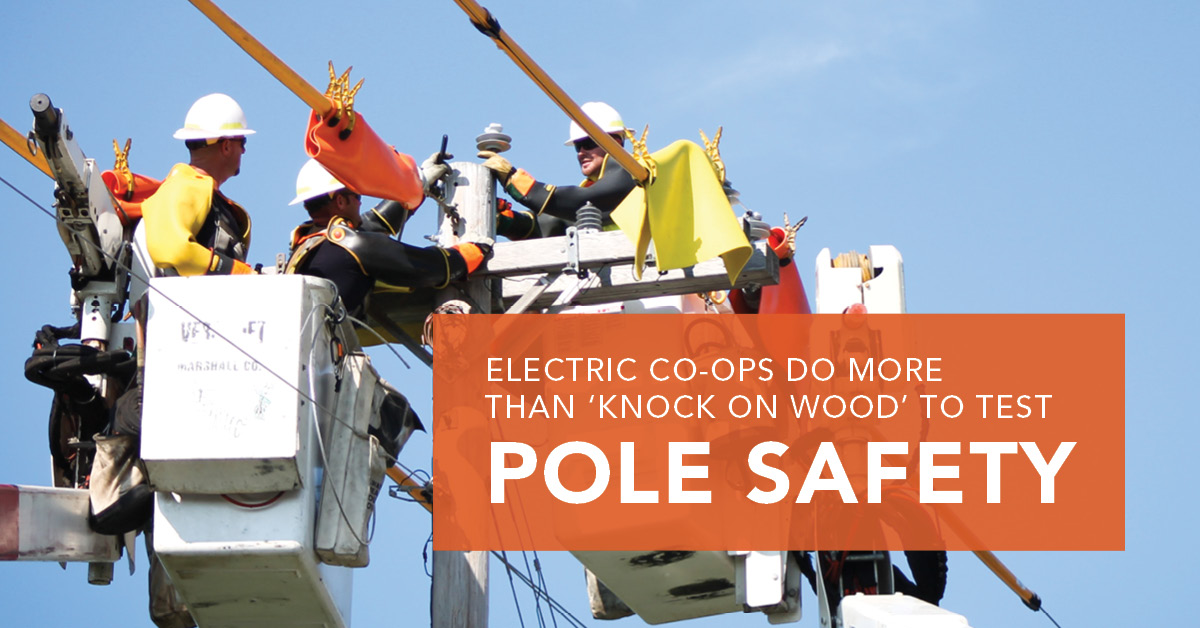When it comes to electric safety, what you don’t know can kill you. Unfortunately, sometimes we think we’ve got the facts when what we really know are popular myths perpetuated by the Web and unreliable sources.
“That old saying ‘knowledge is power’ is very true, especially when electric power is involved,” Rick Coons, CEO at Indiana Electric Cooperatives, said. “That’s why we take every opportunity we can to educate our members, young people and other folks in the community about electric safety.”
One myth that could be particularly dangerous this time of year is the one suggesting that when a power line falls on the ground, it automatically becomes dead. “You should always keep at least 20 feet away from the line, even if you don’t see sparks,” Coons said. “Get farther away if you can. Assume a downed line is a live line.” Call your electric cooperative or 911 immediately when you see a downed line so trained personnel can take care of the problem.
If you’re in a car when you encounter a downed line, don’t drive over it. Don’t try to move it or touch anything with which it may be in contact. “Don’t leave the car unless it’s dangerous for you to stay put,” Coons said. “If you are in danger in the car, jump out of the vehicle as far from the downed line as possible with both feet together. Make sure you are not in contact with the car and the ground at the same time. Then, keeping both feet together, shuffle or hop at least 30 feet away.”
Among other electricity myths:
Myth: Rubber gloves and rubber shoes protect you from electricity.
Truth: That’s true only if they are 100 percent pure rubber with no holes or tears (the kind that electrical linemen wear). Typical cleaning gloves and shoes, which are made with rubber mixed with cheaper materials, aren’t going to protect you in an electrical encounter.
Myth: All power lines are insulated.
Truth: As a rule, power lines aren’t insulated. So, how come birds don’t get electrocuted when they perch on a power line? They don’t represent a path to the ground. If a bird were to touch two wires at once, or a wire and the ground, it would be electrocuted.
Myth: Power lines outside carry the same 110-volt electricity we use in our homes.
Truth: Here in Indiana, most power lines carry 7,200 volts. Some carry up to 19,000 volts. You can’t tell the voltage by just looking at it.
Three lies and a truth about electricity
Power lines are insulated.
LIE: At least 90 percent of them are NOT insulated. Ones that might have been insulated could have lost insulation due to inclement weather.
If a power line is not high voltage, it’s safe.
LIE: Despite what you may hear, voltage won’t kill you, amperage will. Just 1 amp will cause fatal heart irregularities. Between 100 and 200 amps run through an average house.
A live wire will always spark when it fails.
LIE: Sometimes, but not always. When the line makes firm contact, it will spark. If it doesn’t make firm contact, it won’t.
Wet wood can conduct electricity.
TRUE: Although wood is a poor conductor, it can still conduct electricity. If the wood is wet, it is a much better conductor. Be careful!
Source: NYSEG.com
Easy tips for outdoor safety
- Winter storms increase your chances of encountering a downed power line. If you see one, don’t drive over it or try to move it. Don’t touch anything with which it may be in contact. Instead, stay in your car and call your electric cooperative or 911.
- If your car hits a power pole, stay in your car. Again, call your electric cooperative or 911. If you’re in immediate danger — and ONLY if you’re in immediate danger — jump out of the car with both feet together as far as you can. Do not touch the car (which is energized) and the ground at the same time. Do not touch the car to regain your balance. Keep both feet together as you shuffle or hop at least 30 feet away. Do not go back near the car for any reason.
- Tell your kids to never play around or touch substations or electrical transformers.
- Have an outdoor project that requires digging? Always call 811 to locate underground utility lines first. Line locates are free. Hitting an underground power line, though, can be deadly.
- Think it’s safe to work around electricity if you’re using a fiberglass or wood ladder? Think again. Although these two materials are safer than metal, electricity can still flow through wet or dirty fiberglass and wood. If the wood and fiberglass ladders are clean and dry they are safer, but insulated tools, gloves and boots should be used. The best way to stay safe: work with de-energized circuits.
Source: Vic Sunshine, contractorsafetyplans.com





